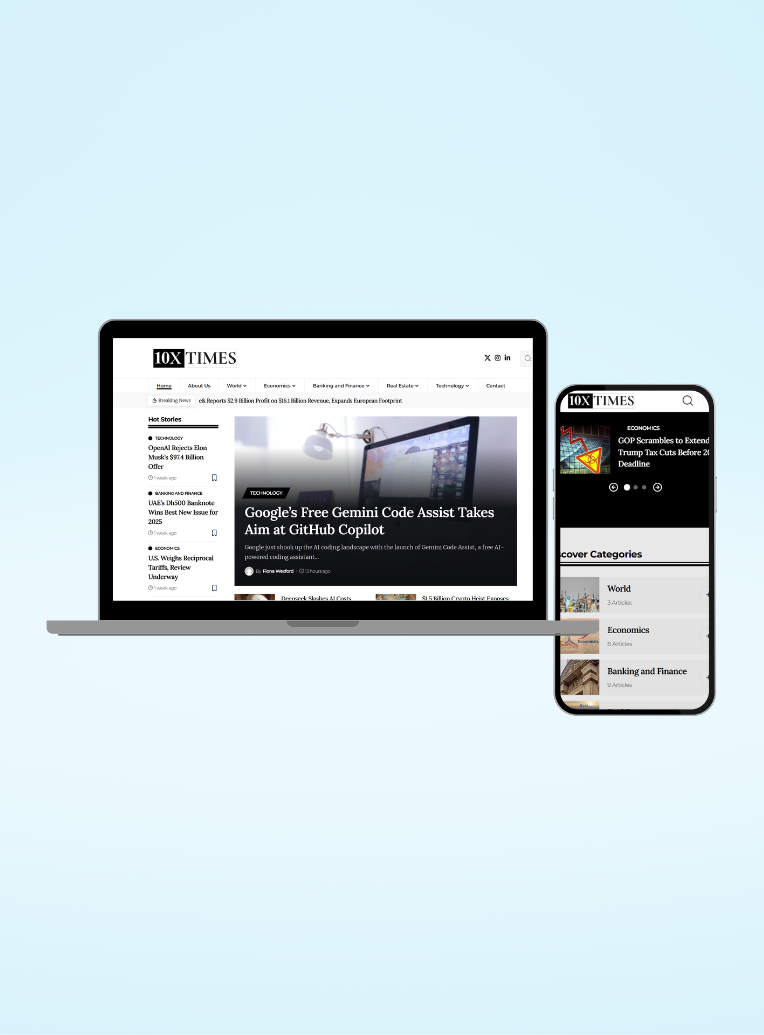On May 23, 2025, Donald Trump sent shockwaves in the tech world with his announcement threatening a 25% tariff on all iPhone units that are not assembled in the U.S. The clear and aggressive message of the 25% tariff aimed at forcing Apple to transfer a significant part of its global manufacturing operations to U.S. soil. In his announcement on Truth Social, Trump noted that this steep 25% tariff would apply to any iPhone sold in the U.S. that was not made in the U.S., which he asserted as a patriotic move to bring jobs and industries home.
Historically, Apple produced nearly 90% of its iPhones in China. Currently, major portions of iPhone production have started moving to India and Vietnam. In 2025, Apple manufactured $22 billion worth of iPhones in India, which accounted for one out of five iPhones sold globally, in a direct attempt to offset risks associated with U.S.-China tensions. The 25% tariff threat puts Apple in a tough situation. While India does help Apple in diversifying away from its operations in China, it now puts Apple at risk in the very market that matters the most to it–the U.S. market.
Despite promises of investing $500 billion in the U.S. and “a lot” of jobs, Apple happens not to have U.S. plants manufacturing smartphones today. It would take years and cost billions to relocate manufacturing there, with some analysts warning that iPhone prices in the U.S. might triple for American consumers.
Read More: Lowe’s Companies Beats Forecast, Eyes Steady Growth
Apple’s Global Shift and the 25% Tariff Disruption
The 25% tariff comes at a time when Apple is supremely global in its supply chains. Moving components and suppliers from China into India and Vietnam gives Apple the best chance to avoid geopolitical risks and swings in labor costs. But if enacted, a 25% tariff by Trump could damage that arrangement. With higher partnerships established with Tata Electronics in India and big investments in Vietnam for component assembly. The globalized structure helps keep the price of iPhones low and fast-track the delivery cycles.
But Trump’s 25% tariff goes on to suggest that none of this matters unless. There is final assembly on American soil. “I have long ago informed Tim Cook… iPhones sold in the United States… must be built in the United States-not India or anywhere else.” That’s a rather ambitious demand, one that would shake the balance Apple carefully nurtured to operate over the last four decades.
Investor Panic, Political Games, and a Shaken Tech Sector
Trump’s 25% tariff threat from the outset rattled investors. Apple shares fell almost 2% in premarket trading, pulling down the Nasdaq and U.S. stock index futures. Coming down to about $2.5 trillion, Apple has lost almost 20% this year already. With the 25% tariff threat, this increases its woes. Tech investors are now factoring in revised margin scenarios and supply reliability for Apple.
The 25% tariff play is, however, more than just about trade; it is politics. Trump rides on an agenda of refurbishing American manufacturing, and Apple is the poster boy for outsourcing. When Trump told Tim Cook, “India can take care of themselves,”. That was an indication that this was clearly as much about optics as it was about economics.
Yet there are still doubts among legal scholars as to whether should he be re-elected. Trump could put into place a company-specific 25% tariff. Usually, tariffs target whole industries or countries, not individual companies. But the uncertainty it injects is more than enough to keep the markets guessing. Throw some spanners into Apple’s plans going forward.
Also Read: US-China Trade Talks Signal Multilateralism’s Big Return
The 25% Tariff: Will Apple Cave or Hold the Line?
The threat of a 25% tariff has placed Apple on a freeway somewhere. Resist and anger a potential future U.S. president, a.k.a. increase costs for its American customer. Comply and face gargantuan logistical difficulties and cost inflation. “The idea of manufacturing iPhones in America is simply not feasible…. Price changes would be so extreme, it’s hard to grasp,” said Dan Ives at Wedbush Securities.
Apple must now weigh the costs of absorbing a 25% tariff against the great capital investment that will be required to set up domestic production. The company could also seek to ramp up lobbying efforts, control backdoor negotiations. At worst consider reducing its focus on the US market.
On the other hand, a 25% tariff on iPhones coming in could see a significant price surge, potentially taking iPhones out of reach for millions. There would be an aftershock reverberating through retailers and telecom carriers, too, thanks to demand drop.
What Lies Ahead for Apple and the Global Market
The 25% tariff threat does not merely constitute a trade policy debate but is an earthquake in the world of technology. Apple, the most valuable corporation in the U.S.. Is now stuck in a peculiar overlapping mess of economics, political agendas, and supply logistics. While this glimmer of hope might ease some pressure off the company. The grand plan of a $500 billion investment into the U.S. would not be enough without iPhone manufacturing.
With plans to ramp up 25% of its iPhone production in India by 2027. Apple will now have to revisit that very plan in the wake of the 25% tariff threat. These plans are closely gazed by investors, consumers, and worldwide tech associates. Were Trump’s threat enforced, a dramatic outpouring of changes would flow to instigate other tech firms to rethink their offshore endeavors.
How Apple chooses to repatriate manufacturing or remain invested in Asia. These days remembers this much-forever imprinting: the threat of a 25% tariff, changing the course forever.
For More Trending Business News, Follow Us 10xtimes News






